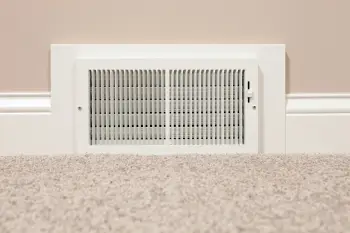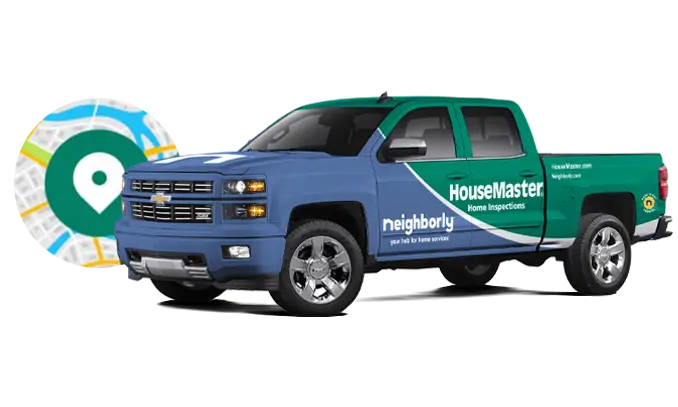
Forced warm air heating is the most common type of heating system found in homes today. The operating principle behind these systems is quite simple. All the basic components in the system are contained in an air-handling unit referred to as a furnace.
How Does It Work?
The furnace is operated by a thermostat and automatic controls, which safely keep the house at an even temperature. When the thermostat calls for heat, an oil or gas burner is typically activated; less frequently a set of electric coils provides the heat energy. The hot gas from the burners rises up through a chamber called a heat exchanger as a fan/blower assembly draws air from the rooms of the house into the furnace cabinet. Before entering the furnace, the circulating air passes through a filter or electronic air cleaner, which traps airborne dirt.
The blower then forces the filtered air through the heat exchanger, where the heat of the combustion gases is transferred to the cooler room air. This now warmed air is then circulated throughout the house through a duct system. A fan-limit control regulates the operation of the blower and shuts down the burners if the heat exchanger’s temperature gets too hot.
Forced warm air systems rapidly provide heat with register temperatures in the 120° to 140° F (49° to 60° C). Contrary to common belief, setting the thermostat to a higher temperature does not raise the temperature of the air supplied by the furnace – it only signals the furnace to continue pumping air into the room for a longer period until the desired room temperature is reached. To conserve energy and improve home comfort during the active part of the day, it is best to set the thermostat at a reasonable comfort level and leave it alone rather than continuously adjusting it.
Often the ductwork installed for a forced warm air system can serve for a central air conditioning system if the system has the proper air returns and a high volume blower fan. An air conditioning contractor can accurately determine the practicality of the dual use of the ductwork. A well-designed heat distribution system will have the ducts on the outside walls with both high and low adjustable supply registers and a return register in each room. In those homes with only a central return register, it is advisable to run the blower fan on continuous air circulation (CAC) to improve air circulation and reduce drafts. On rare occasion, a house with forced warm air heating may have two or more zones; in most cases however, multiple furnaces will be used instead.
Thermostats must be properly positioned to suit your home's heating requirements efficiently. Thermostats placed in cold hallways or hot kitchens will not provide balanced heat throughout the house. To conserve fuel, an automatic setback or programmable thermostat should be considered to take the guesswork out of setting the thermostat. With gas systems, a flue damper can further reduce energy use. The ultimate energy waster in a warm air system is a dirty air filter - the system must really labor to pump the air through such an obstruction.
How Do I Take Care Of It?
Most furnaces have a 15–20-year design life. Like any mechanical equipment, however, the degree of maintenance can affect the actual service life. Periodic maintenance of a furnace involves cleaning the burner and the heating surfaces, adjusting duct dampers (if present), readjusting controls, oiling motors and fan, and if an older unit, adjusting the belts. The efficiency of a heating system can decrease as debris builds up on burners or the filter becomes clogged with dirt. Many gas utilities and service companies offer service contracts for such periodic inspection and maintenance of heating units. If the unit has an oil burner, annual cleaning and servicing of the burner is required.
One maintenance item most homeowners can take care of themselves is the filter. The condition of the system’s filter or electronic air cleaner (if present) should be checked at least monthly during the heating season. Permanent, cleanable filters should be cleaned often during the heating season; disposable type filters should be replaced when dirty.
The gas burners in older furnaces are equipped with a safety device to cut off the gas flow in the event the pilot flame goes out. Newer furnaces utilize electronic or hot surface igniters that do not require a pilot flame. As another safety feature, the blower access door must be in place when the furnace is running. Some systems automatically shut-down if this door is opened.
It is most important to maintain any humidifiers and air conditioning condensate drains, which are typically located over the heat exchanger to prevent them from overflowing or leaking onto the heat exchanger causing rust and premature failure. Some exchangers have failed due to this rusting or inherent design or manufacturing defects in as little as 5 years. This is another reason to arrange an annual check and servicing of your heating system.
Remember, these tips are only general guidelines. Since each situation is different, contact a professional if you have questions about a specific issue. More home safety and maintenance information is available online at housemaster.com.
